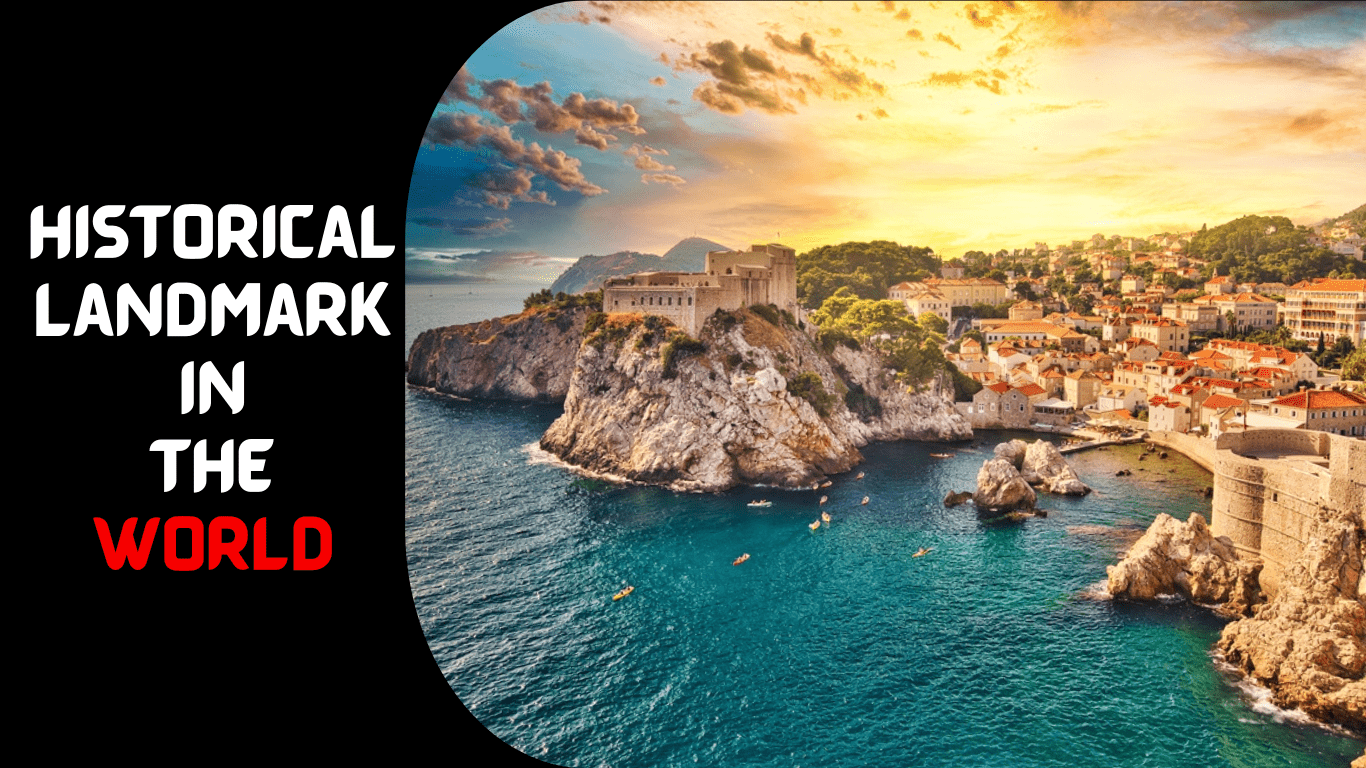Historical landmarks serve as tangible links to our past, providing a glimpse into the cultures, achievements, and events that have shaped our world. From ancient wonders to modern marvels, these sites weave a rich tapestry of human history. This article will delve into some of the most iconic historical landmark in the world, offering a captivating journey through time.
Historical Landmark In The World

The Pyramids of Giza: A Testament to Ancient Ingenuity
The Pyramids of Giza stand as an enduring testament to the ingenuity and architectural prowess of the ancient Egyptians. Built over 4,500 years ago, the Great Pyramid of Khufu is the largest of the three and remains one of the Seven Wonders of the Ancient World. These structures, constructed with precision and aligned with celestial bodies, reflect the advanced knowledge and craftsmanship of their builders.
Discovering the Enchanting Secrets: 13 Hidden Places in Nainital
The Acropolis: Greece’s Crown Jewel
Perched atop the city of Athens, the Acropolis is a symbol of ancient Greek civilization and a masterpiece of classical architecture. Dominated by the Parthenon, a temple dedicated to the goddess Athena, this sacred site showcases the Greeks’ commitment to beauty, balance, and intellectual pursuits. A visit to the Acropolis is a journey through the cradle of Western civilization.
The Great Wall of China: An Architectural Marvel
Stretching over 13,000 miles, the Great Wall of China is a colossal feat of engineering and one of the most recognized historical landmarks. Built to protect against invasions, this wall snakes through diverse landscapes, showcasing the resourcefulness of the ancient Chinese. Each brick and stone tell a story of determination, strategic thinking, and the unyielding spirit of a nation.
Unveiling 13 Hidden Places in Valparai
Machu Picchu: Inca’s Hidden Gem
Nestled high in the Andes Mountains, Machu Picchu is an archaeological marvel and a testament to the advanced urban planning of the Inca civilization. This ancient city, built in the 15th century and hidden from the Spanish conquistadors, offers breathtaking views of terraced fields and intricate stone structures. The mystery surrounding Machu Picchu only adds to its allure, making it a must-visit historical landmark.
The Colosseum: Rome’s Grand Amphitheater
The Colosseum, a colossal amphitheater in the heart of Rome, stands as a symbol of the grandeur of the Roman Empire. Built to host gladiatorial contests and public spectacles, this architectural wonder could hold up to 80,000 spectators. The Colosseum’s design, with its innovative use of arches and columns, has inspired countless structures throughout history, showcasing the enduring influence of Roman engineering.
Petra: Rose City of the Desert
Carved into the rose-red cliffs of southern Jordan, Petra is a city that once thrived as the capital of the Nabataean Kingdom. Accessible only through a narrow gorge called the Siq, this archaeological wonder features stunning rock-cut architecture, including the iconic Al-Khazneh, or the Treasury. Petra’s blend of natural beauty and human craftsmanship makes it a UNESCO World Heritage Site and a remarkable historical landmark.
5 Hidden Waterfalls in Tamhini Ghat
The Taj Mahal: A Monument to Love
Commissioned by the Mughal emperor Shah Jahan in memory of his beloved wife Mumtaz Mahal, the Taj Mahal is an unparalleled testament to love and devotion. This pristine white marble mausoleum, set against the backdrop of the Yamuna River, is a masterpiece of Islamic architecture. The Taj Mahal’s symmetrical beauty and intricate detailing have earned it a place as one of the New Seven Wonders of the World.
Stonehenge: Mysteries in Stone
In the rolling plains of Wiltshire, England, Stonehenge stands as a prehistoric monument that continues to captivate the human imagination. Composed of massive standing stones arranged in a circular pattern, the purpose and origin of Stonehenge remain shrouded in mystery. The site’s alignment with celestial events adds an astronomical dimension to its enigma, making it a fascinating historical landmark.
The Statue of Liberty: Symbol of Freedom
Standing proudly in New York Harbor, the Statue of Liberty has welcomed millions of immigrants to the United States since its dedication in 1886. A gift from France, this colossal statue represents freedom and democracy. The statue’s iconic torch and crown, along with the words of Emma Lazarus engraved on its pedestal, embody the ideals of a nation built on diversity and opportunity.
The Great Barrier Reef: Underwater Wonderland
While not a traditional structure, the Great Barrier Reef holds immense historical and ecological significance. This sprawling coral reef system off the coast of Australia is the world’s largest living structure, teeming with an incredible diversity of marine life. The Great Barrier Reef serves as a natural wonder that reminds us of the interconnectedness of ecosystems and the importance of preserving our planet’s biodiversity.
Conclusion: Unveiling the Tapestry of Human History
As we traverse the globe through these historical landmarks, we unveil the tapestry of human history woven with threads of innovation, artistry, and cultural significance. These landmarks not only stand as tangible remnants of the past but also beckon us to contemplate our shared heritage and the strides humanity has taken over millennia.
Frequently Asked Questions
Q1: Why are historical landmarks important?
Historical landmarks are crucial as they provide a tangible connection to our past, preserving cultural, architectural, and historical achievements. They serve as educational tools, allowing present and future generations to learn from and appreciate the accomplishments of those who came before.
Q2: How are historical landmarks selected?
Historical landmarks are often designated based on their cultural, historical, or architectural significance. Government bodies, UNESCO, and other organizations assess and designate landmarks based on criteria such as historical importance, uniqueness, and the need for preservation.
Q3: What challenges do historical landmarks face?
Historical landmarks face various challenges, including natural decay, environmental factors, urban development, and, at times, inadequate preservation efforts. Balancing the need for tourism with the preservation of the site’s integrity is an ongoing challenge for many landmarks.
Q4: Can I visit all these landmarks?
Yes, many of these landmarks are open to the public, welcoming visitors from around the world. However, it’s essential to check travel restrictions, entry requirements, and any conservation efforts in place to ensure a responsible and enjoyable visit.
Q5: How can we contribute to the preservation of historical landmarks?
Contributions to the preservation of historical landmarks can include supporting conservation organizations, practicing responsible tourism, and advocating for policies that prioritize the protection of cultural heritage. Every individual can play a role in ensuring these landmarks endure for future generations.

1 thought on “Historical Landmark In The World”